Common Installation Mistakes
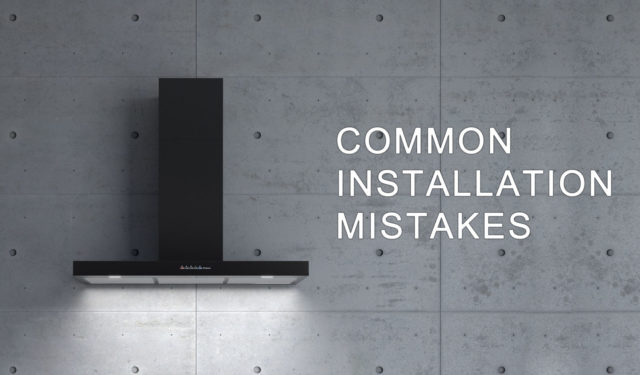
Your new range hood is an important part of the kitchen, and an expensive investment. Let’s make sure it looks and works its best, by avoiding the mistakes listed in this article. (There’s also a bullet-point summary on the bottom).
Phase 1 – Receiving & Inspection
It’s a good idea to inspect your new range hood (as well as other appliances and home electronics) as soon as you receive the shipment. This way, if there’s a problem (shipping damage, missing parts, etc), it can be resolved within the appliance seller’s and the shipping carrier’s timeframes. Also, not waiting till the last moment will avoid problems with waiting for a replacement, which can mess up your renovation timeframe.
Even though every Futuro Futuro range hood is individually inspected prior to shipping, and is specially packaged to withstand the rigors of shipping systems, shipping damage does happen once in a while. Letting us know about it as soon as possible lets us take care of the problem as soon as possible.
Before installation, it’s a good idea to plug in the range hood and check its function. That seems like a common-sense thing, but in the flurry of activity surrounding a kitchen upgrade, it’s easy to forget it. All Futuro Futuro range hoods are equipped with a US/Canada standard 3-pin 110-volt plug, so all you need is a spare outlet or an extension cable. Simply plug in the hood, and check the function of the blower and lights. This way, you’ll know it’s 100% operational, and if your installer makes a mistake, you’ll know exactly what to troubleshoot.
During inspection, you may notice that some parts of the hood (such as the vertical chimney) look like they’re painted white, instead of stainless steel. This is a protective plastic film that’s designed to reduce the chance of scratches during installation. Don’t remove this film until installation is complete.
Phase 2 – Planning For Installation
Ducted or Ductless?
Range hoods can be installed in 2 configurations: ducted (“vented”) or ductless (“ventless” or “recirculating”). In a ducted installation, a duct carries the air from the range hood to the outside of the house; in a ductless installation, the air is scrubbed by an additional set of charcoal filters, and then returned to the kitchen.
Whenever possible, it’s recommended to connect a range hood to an outside duct. Not only will this result in better performance compared to ductless installations, but also lower noise.
Ducted Installation
You should always follow the manufacturer’s recommendations for the duct size and type when installing a range hood. Connecting a range hood to a smaller duct than specified will lead to loss of performance, and may even cause overheating problems leading to mechanical failure.
Almost all high-performance range hoods require the use of rigid ducting. The reason is simple: flexible ducting has ridged walls, which create turbulence. Instead of a smooth stream, the airflow is randomized, causing loss of performance and additional noise. Conversely, a rigid duct has smooth walls which help to keep the airflow laminar, which is especially important for range hoods that extract more than 200-300 cubic feet per minute.
Flexible ducting is also susceptible to cracking and rupture, which could cost hundreds of dollars to locate and repair. Rigid ducting may be slightly more expensive and a little harder to install, but it’s the right way to go. (Also, many local building codes require the use of rigid ducting for kitchen ventilation).
In a ducted installation, charcoal filters should not be used.
Ducted Installation – Outside Discharge
One of the most serious mistakes in range hood installation is terminating the duct in an enclosed space, e. g. the attic.
This will cause the range hood to operate improperly (if it operates at all), due to the back-pressure from the enclosed space. No matter how big the space is, air won’t be compressed – range hoods are high-airflow devices, not high-pressure.
In addition, venting warm moist air from the kitchen into attic space is a recipe for a major mold growth problem.
If the range hood doesn’t suction air after installation, or you actually feel air blowing out from the filter surface – definitely check the ductwork.
Ducted Installation – Duct Caps / Roof Caps
An outside duct that exits through a side wall should end with a duct cap, while roof-mounted ducts are sometimes terminated with a “U” shaped elbow, allowing the air to exit while keeping out the rain and snow.
Make sure the cap is the same size/diameter as the duct – using a smaller cap will cause problems with airflow and static pressure. Some installers think it’s OK to terminate a 6-inch duct with a 4-inch cap… but it’s not OK. Not even close.
Regardless of the type of termination, it’s important to have a damper (also called “backdraft” or “airflow controller”) at the end of the duct. The damper keeps outside air from back-flowing into the duct, as well as keeping out unpleasant surprises in the form of birds, insects, and squirrels.
It’s a good idea to check the condition of the duct cap at least once every couple of years – make sure it’s not clogged, and the louvers and/or backdraft operate freely and smoothly.
Ductless (Recirculating) Installation
Although it’s always recommended to connect the range hood to an outside duct, there are situations where this is simply impossible. Many high-rise condominiums and co-operative buildings prohibit any modifications that pierce the outside walls of the building. Ultra-modern condos with concrete ceilings and floor-to-ceiling glass windows also exclude the possibility of an outside duct.
The solution is installing the range hood in “ductless”, also called “recirculating” mode. In this situation, in addition to the metal filters that absorb the grease droplets, the hood uses charcoal filters (aka “carbon filters”) to absorb odors. After the air has been de-greased and de-odorized, it’s released back into the room.
If you intend to install your range hood in ductless mode, you would also need to:
- Order charcoal filters (sold separately)
- Make sure the charcoal filter is installed in the hood
- Change the filter every 6 months
One of the most important things to keep in mind with ductless hoods, is that the charcoal filter should be changed regularly. Eventually, it becomes clogged with grease and odor particles, and will restrict airflow, which could cause the blower motor to overheat and fail prematurely. If you can’t replace the charcoal filter, it’s actually better to remove the it, than to operate the range hood with a clogged filter.
Replacement filters are available on our website, in the “Range Hood Accessories” category. Note that there are several types of carbon filters – please confirm which type your range hood model uses, prior to purchasing.
Electrical
The 2 most important considerations for the power connection to the range hood are: don’t cut the plug, and make sure the hood is connected to a dedicated line.
Don’t Cut The Plug
One of the most common problems with appliance installation is the electrical connection. The rule-of-thumb (and the UL regulation, BTW) is simple: if an appliance comes with exposed wires, it must be hardwired; if it comes with a plug, it must be plugged in. Following this rule will avoid problems with manufacturer’s warranty, as well as potential issues with inspection. All Futuro Futuro range hoods are equipped with a power cord that has a US/Canada standard, 3-pin grounded, 110-volt plug.
Some installers like to save a few minutes (versus installing an outlet) and cut the plug & splice it directly into the electrical line instead. Don’t let them do this! Not only is hardwiring a bad idea from the viewpoint of regulations and inspection, but if there’s a need to service the range hood, the technician must be able to disconnect the hood and plug in the diagnostic equipment. If the hood is hardwired, only a licensed electrician is allowed to modify the wiring. Avoid this problem by making sure the plug is not cut and the hood is plugged into an outlet.
Don’t Share The Line
Another good rule to follow is connecting each major appliance – including the range hood – to its own separate (dedicated) electrical line. It’s not a question of amperage (or “load”) on each wire, but rather ensuring that each appliance does not interfere with the others by causing voltage drops or introducing electrical noise into the line.
Devices like gas stove ignitors, refrigerator compressors, and microwave magnetrons, can place a momentary but significant load on the circuit. Mixing and matching different devices on the same line is never a good idea, but especially so when one of the devices is equipped with sensitive electronics or lighting transformers.
Please make sure there’s a dedicated line available for the range hood, that’s not shared with any other appliances, or dimmable lights. This will not only ensure longer service life, but makes troubleshooting and isolating potential problems a lot easier.
Phase 3 – Location & Support
Installation Height
There are several factors that affect how high a range hood should be installed above the cooking surface. First and foremost, check out the range hood manufacturer’s recommendations. Typical range hoods are installed in the 26-to-30 inch range above the cooktop, although this may vary from a low of 18 to a high of 36 inches.
For best performance, Futuro Futuro recommends installing our range hoods at 26 to 28 inches above the cooktop. Since the air polluted from cooking doesn’t rise in a perfectly straight line, but spreads out rather aggressively, it’s a good idea to position the range hood low enough to give it a good chance to capture the smoke/steam.
Also, it’s recommended to position the range hood at a height where the lights will be below eye level, which also keeps the control panel within easy reach and makes cleaning easier.
Proper Support
One of the most dangerous problems with range hood installation is attaching the unit to sheet-rock alone. Regardless of the weight, any range hood should be attached to structural beams or joists, in order to provide proper long-term support. If there is no beam/joist at the intended range hood location, a cross-brace made from 2×4’s, 3/4-inch plywood, or other strong material, is an acceptable substitute.
If a range hood is attached to sheetrock, it may initially appear to be stable, but over time, as it’s being used, the sheetrock anchors will loosen. Make sure your installer attaches the range hood the right way from the start.
Wall-Mount Hoods – Additional Considerations
Range hoods should always be installed over a backsplash. Don’t cut or frame a hood into a backsplash, for several reasons:
- It’s a hassle to cut the stone or tiles around the hood, especially if curved or unusual shape.
- Visible grout lines never look good.
- If maintenance or service is needed in the future, the hood will have to be cut out from the grout before the technical can perform service.
- Higher risk of damage (dents or scratches) to the range hood.
There should be a space between cabinet walls and the range hood. Some architects and designers provide only enough space between the cabinets to accommodate the exact width of the hood. This is a bad idea for several reasons:
- Lack of space makes installation more difficult.
- Any miscalculation may result in the hood not fitting into the space at all.
- If cabinets expand or shift over time, they may crush the hood, causing stainless steel to bulge, or in case of hoods equipped with a glass panel, the glass may crack.
- The confined crevices will accumulate dirt & grease, and make cleaning more difficult.
To avoid all these issues, leave a space of at least 1/2 inch between the edge of the wall-mount range hood and the cabinetry.
Phase 4 – Installation Process
Protective Film
The vertical chimney of Futuro Futuro range hoods is covered with a protective plastic film, to avoid scratches during installation. This film should not be removed until the installation process is complete – please make sure your installer is aware of this.
Miscellaneous
On some models, the grease filters may also feature a protective film (usually translucent blue). This film should be removed prior to using the hood.
Models that feature extensive glass elements, such as the Skylight, Luxor, Acqualina, Quest, Wave, and others, should NOT be lifted by the glass during installation. This may seem like common sense, but once in a while, installers think it’s a good idea to lift a 100-pound appliance by a decorative glass panel.
After installation, dirt & fingerprints can be easily removed by spraying some WD-40 or other non-abrasive cleaner onto a paper towel, and wiping the stainless steel surfaces. Do not use stainless steel polishes (for example, Barkeeper’s Friend), since they may scratch or discolor the surface.
Conclusion
So, in summary:
- As soon as the shipment arrives – inspect it.
- Before installation – plug it in & make sure it works.
- Protective film: don’t take off film until after installation.
- If ducted – duct should be rigid, 6-inch round, with matching caps/outside vents.
- If ductless – charcoal filters should be changed every 6 months.
- Electrical: don’t cut the power plug, and make sure the hood is on a separate circuit.
- Support: don’t attach to sheetrock alone; only to beams, joists, plywood.
- Wall-mount hoods: install hood OVER backsplash, not IN it. Leave space between hood and cabinets.
- Don’t use abrasive cleaners; we recommend WD-40 for the steel, Windex for glass.
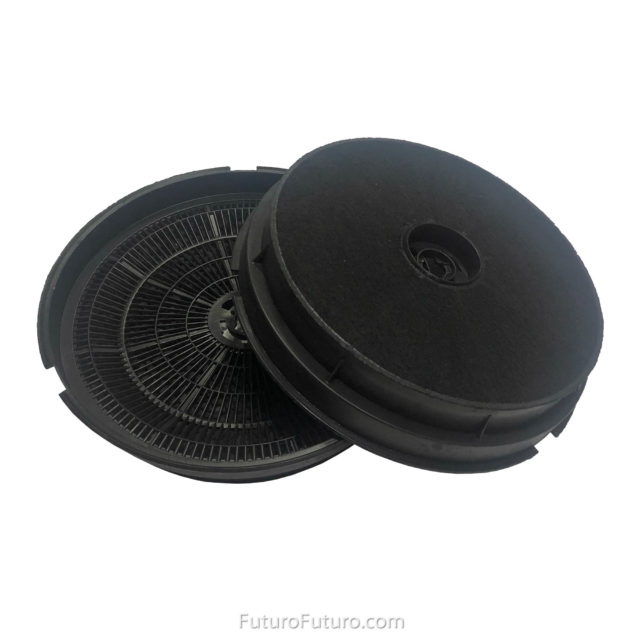
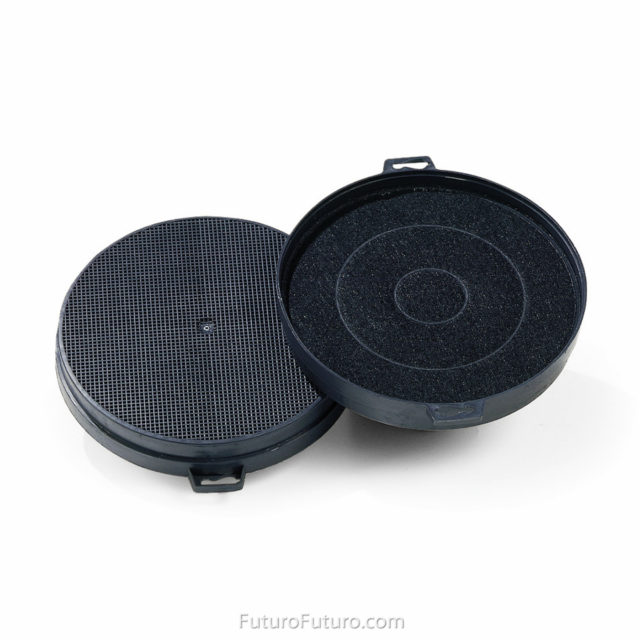
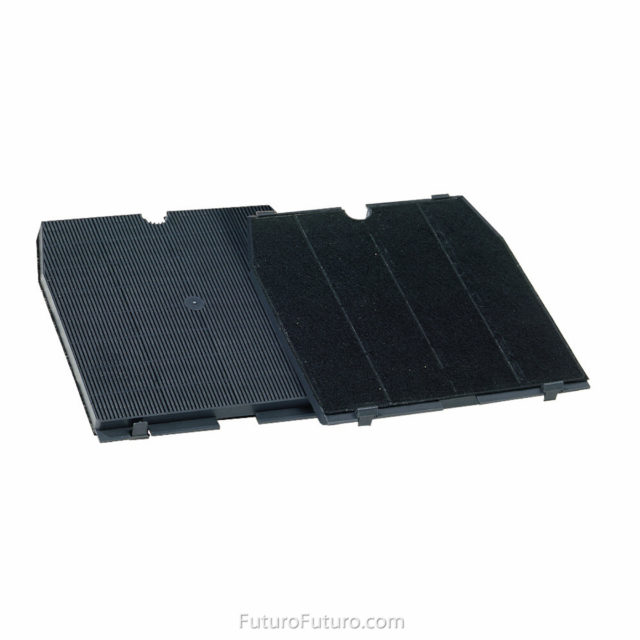
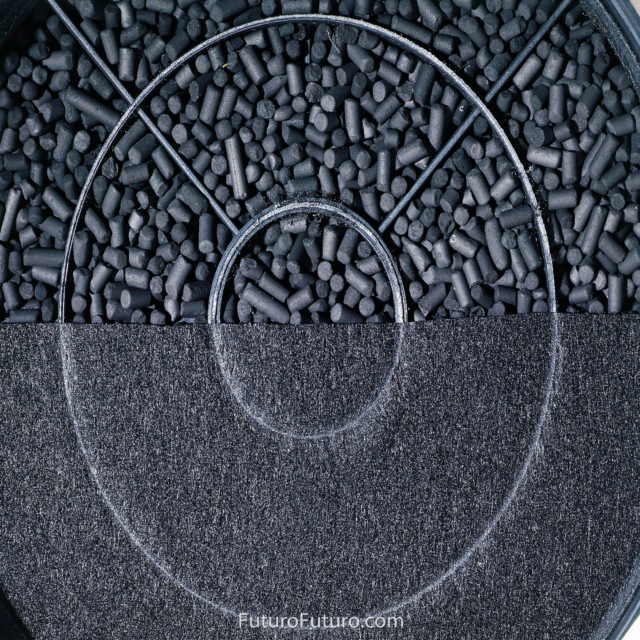
Sue Pannell
Question — We have a Vassani Model# 668I/CS53 island mount range hood. It comes with an inner and an outer stainless steel duct. Due to our 8′ ceiling height, we can only use 1 of those 24″H ducts. Is is allowed to use only one of the 2 ducts that are included with the product? Also, if it is allowed, should we use the inner (vented) or outer duct?
Futuro Futuro
Hello Sue,
It’s allowed with our range hoods – Futuro Futuro.
However, we have nothing to do with Vassani, and not familiar with their range hoods at all.
You would be better of contacting Vassani directly.
John E.
How do I remove debris from the fan case?
Futuro Futuro
Hello John,
It really depends on what kind of “debris” you’re talking about and what model of the range hood you have.
We would recommend you to contact our Customer Service by phone for further assistance.
(718) 236-1570 opt. 1
Mon-Fri, 9am-6pm EST
John
best way to cut stainless steel stack cover ?
Thanks
Futuro Futuro
Hello John,
It entirely depends on a qualification of the installer. A qualified installer with a good pair of hands and a jigsaw with a brand new blade for the metal will be able to perform cutting.
Please note: The place of incision has to be covered with a masking tape and pre-drawn before cutting.
John
Thank you for the info and quick reply .
M
What if a gas line is running through the whole for the vent? Is that a problem? Would it need to be removed?
Futuro Futuro
Yes, it’s going to be a problem and it’s better to be removed.
At least it will create an obstacle on the way of the air, which results in a back draft.
On this subject you will be better off consulting with your plumber.
Tamara A Harris
We just bought a home has a jenn -air downdraft – vent run is over 30′ . This is a island install – we will be putting NG in and a new gas stove -We have been studing island range hoods/ cfms/ duct size/ make up air litterly for a week . Do we need a 10″ vent ? Is 680 cfm enough through a 8″ vent or do we need to go to the 10″ vent -that means 1200cfm and make up air for sure. kitchen is 14×18 – open floor plan 12″ cielings.
Thanks
Tammy
Futuro Futuro
1) All Futuro Futuro range hoods are equipped with a 4-speed, 940-CFM blower, which provides an adequate ventilation for the majority of residential cooking scenarios.
We don’t offer blowers larger than 940 CFM, for several reasons:
– Normally 300 CFM is more than enough for residential use.
– Noise level – the more CFM, the higher the noise level.
– Installation requirements – 1200/1500-CFM blowers and higher are typically mushroom-type blowers installed on a roof, and they require ducts of 10″-12″ diameter or larger, which present a problem with many types of house builds, especially older homes.
– The requirement for make-up air systems (additional expense) in many locations.
– Heating & cooling costs – even at 940 CFM, the hood will replace all the air in an average house within 25-30 minutes. This means your HVAC system will have to run for hours to correct the temperature, leading to significantly higher utility bills. Even at 940 CFM, our hoods are equipped with a timer that will automatically lower the speed after 10 minutes, in order to prevent the utility bills problem, as well as negative air pressure which is harmful for health.
2) You are absolutely right.
6″ duct is not capable to support 940 CFM airflow.
Please note that blower’s CFM are always measured under “zero static pressure” conditions: When the air blows directly from the blower, without a duct, filters, charcoal filters, silencers, elbows, dampers, etc.
Each individual feature mentioned above will reduce CFM.
For instance:
You have a range hood with 6″ duct and 600 CFM motor.
This is the best scenario.
Now, you need to install metal filters and charcoal filters for ductless application, damper, end cap, etc – your CFM will be reduced by at least 50%.
So instead of 600 CFM you are getting only 300 CFM and it’s on a highest speed, which creates a lot of noise.
This is the reason why our blowers are more powerful than they should be. Meaning that with all components they will produce maximum airflow for 6″ duct.
Bryne
Can a cabin be built over the a wall range hood (with duct).
With the cabin been built so that the duct is not touched?
Please Is this acceptable?
Futuro Futuro
Yes, it can be done. You can build a cabinet around the vertical chimney, whereas the horizontal body of the hood will be sticking out.
For examples of such installation, please go through pictures of 36″ Streamline Wall or 36″ Positano Wall on our website.
Brit
We have floating shelves in the kitchen and not cabinets. Is it possible to install the range hood alone to the wall/beams or does it absolutely always need to be attached to under cabinets?
Futuro Futuro
Hello, Brit.
Thank you for your question.
Could you please specify what model of the range hood you’re interested in exactly? This will help to assist you better.
Linda B Insley
When replacing my range hood, should the 7″ piping be replaced also?
Futuro Futuro
Futuro Futuro range hoods require a duct not smaller than 6″ round. It can be 7″, you don’t need to replace it. All you have to do is to use an adapter from 6″ to 7″.
Also, it’s always better to use rigid duct, not flexible. They are more credible and less noisy.
LINDA
I have 2 inch gap between back wall and rangehood. maybe cause i asked for my cabinets to be 1 inch deeper than standard.
should I fill in the gap with something so that grease doesn’t shoot up into that space
Futuro Futuro
If the range hood always operates when you’re cooking and metal grease filters are washed regularly, then all the grease will be absorbed by the range hood.
But just in case, and for aesthetics, usually people cover these gaps with some spacers or liners to cover a hole.
Viena Abdon
My range hood shuts off awhile in use. Motor runs really hot. What can be the problem? I have a 900cfm with 6in duct. We did squeeze the duct a bit but not too much. Is this causing it?
Futuro Futuro
If you have a Futuro Futuro range hood, you have to use 6″ round and rigid (NOT flexible duct). It’s supposed be 6″ round THROUGHOUT, NO smaller places.
If you have it smaller in one place – you can consider the entire duct is smaller. And this effects suction significantly. Plus it slowly kills the blower, which is constantly overheated.
Flexible ducts do bent and spoil very easily. Although, it seems like a cheaper and more convenient option, it always results in much higher expenses in a long run, when you need to replace your spoiled flexible duct and make it right this time.
When the blower this powerful is trying to push the air through the narrow spot, it creates a backflow. Eventually, the blower works against itself, being constantly overheated. At some point it will give up too.
Long answer short – yes, squeezed duct is definitely causing the problem.
Tammie Houston
I had no idea that so many problems could come out from the improper installation of kitchen hood ranges. It’s clear that you need to make sure that it’s installed as best as can be to make sure that it is performing in its best performance. I’m planning on buying a restaurant and starting my own business, it seems to me I’ll have to hire a kitchen hood inspection service to look the place over to make sure they’re all in good condition.
Steve
You say this recommendation –> “installing our range hoods at 26 to 28 inches above the cooktop”
But most cooktops are installed 36 inches off the ground (like the cabinets). Let’s say the range hood is 28 inches above that. That means the bottom of the range hood is 36+28 = 64 inches off the ground. That is 5 feet 4 inches.
How does someone 6 feet tall cook then. If they lean forward to the back burner, wouldn’t their head hit the range hood for example? Or it would be hard to reach the back burners while standing straight then?
Futuro Futuro
We understand your concern regarding the height, however, there are certain rules which needed to be implied for proper installation of any range hood, regardless of brand, cost and/or model in order to achieve maximum performance.
The most efficient space between your cooktop and a bottom of an installed range hood is 28″, if your range hood is the same width as the cooktop.
When you increase that space by 1 inch, you have to add 2 inches to the width of your range hood (one on each side).
Another words, the higher you go, the wider your range hood has to be.
And it won’t still be that efficient as a range hood installed at 28″ height.
There are a few reasons why you have to follow these recommendations:
1) Natural draft (open windows, doors, second floor, etc.)
It works against a range hood.
2) Your house air conditioner return does the same function as your range hood – it sucks the air from your room.
The problem is that your air conditioner return is at least 10 times more powerful than any range hood you can buy.
So range hood’s goal is to capture smoke BEFORE it escapes to the room.
And for that there’s only one solution – install it at the optimal height.
3) If the range hood will be installed higher than the eye level, powerful LED lights meant to illuminate cooking surface will be only a couple of inches from your eyes all the time you’re cooking. You will be constantly blinded by those lights a little bit.
Range hoods are never as deep as countertops in order to prevent people hitting their heads over them.
Steve
Very helpful reply! Thank you!
Mary Repole
I have seen some installation of recirculating range hoods in a kitchen with high ceilings where the vent hood just stops half-way up the wall… from a design aesthetic, should it go all the way up to the ceiling?
Futuro Futuro
The chimney portion on the pictures is just a duct cover.
If you vent your range hood through the wall (horizontally), and not through the ceiling, or if you don’t have a duct at all, then you don’t need to run the chimney cover all the way up to the ceiling.
Walter Hanasko
I currently have a 6 inch high range hood that needs to be replaced. I am thinking of replacing it with a 5.5 inch high range hood. Would the 5.5 inch range hood rear duct opening be off center as opposed to a 6 inch?
Futuro Futuro
Please contact our Customer Service by phone at (718) 236-1570 opt. 1 for suggestions.
Business hours: Mon-Fri, 9am-6pm EST
Gustavo Garcia
I got the 36″ Minimal White Wall Range Hood and using it ductless
due to lower ceilings because of a soffit I can only use the portion that has the grill vents open, but I cannot find a way to attach it to the hood.
Do you sell a shorter outer part I can use to attach it without having to pull it out (meaning the grill is exposed and the outer part is below grill)
Any suggestions?
Futuro Futuro
Hello, Gustavo.
Only the lower chimney cover is designed to be attached to the horizontal body of the hood.
The upper chimney cover (with vents) is designed to be attached to the structural piece just below the ceiling level.
From the bottom it just has to be pressed up by the horizontal body of the hood.
Lucy
Hi I want to install the 36″ Savona Inox Ceiling Range Hood flush on a 10′ ceiling above the island would that work? Thank you
Futuro Futuro
“Savona” works good for recessed ceiling hood.
Recessed ceiling hoods, such as “Savona”, are designed specifically for high ceilings (as well as sloped, cathedral, vaulted, any ceiling type really) or for people who don’t want to block the view. So there is no limitation by the distance from the stove.
These all are advantages, but as always it comes with a price. Performance-wise recessed ceiling models work differently as compared to suspended range hoods. By reason of being installed rather far from the cooking surface recessed ceiling range hoods work more like fans – ventilation for the entire room. They can clear the air in the room EVENTUALLY, but they cannot do it right away.
Therefore, if you’re doing some heavy cooking, you have to be ready that at some point there will be a smoke in your kitchen. Otherwise, they work fine.
zidane
very clear and good article easy to understand. Thank you
Jayson
Can a makeup air damper be tied into the kitchen exhaust hood controler? I am looking at purchasing the WL42INSERT. Thank you
Futuro Futuro
Make up air system is an entirely independent system.
The only connection between a make up air system and a range hood is that you install a sensor inside the range hood’s duct. When the air goes through the duct, it triggers this sensor, activating make up air system.
These sensors can be different, depending on the make up air system manufacturer. Some of them look like small tabs or a “nails”, some of the look like dampers.
You can go with any make up air system manufacturer you want, because there is no such thing as compatibility between a range hood and a make up air system.
stefanie
I have a 50lb under cabinet range hood. Prior we had a undermount microwave hood that was attached to cabinet above and sheet rock wall. The question is we put in new quartz backsplash and want to only hang the undermount cabinet range hood to only the cabinet. Will the base of the cabinet be enough to hold the 50lbs? We don’t want to drill holes into the quartz backsplash on the wall.
Futuro Futuro
Hello, Stefanie.
The best way is to find out the weight limit of your kitchen cabinet from the manufacturer.
This way you will know for sure and not going to second guess.